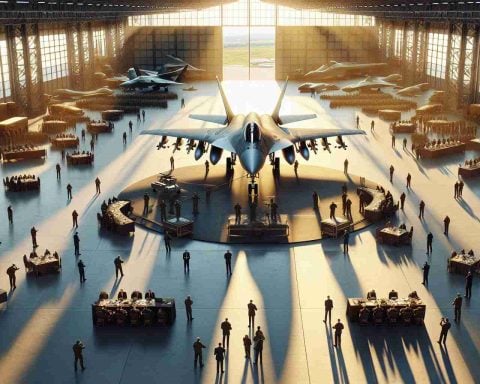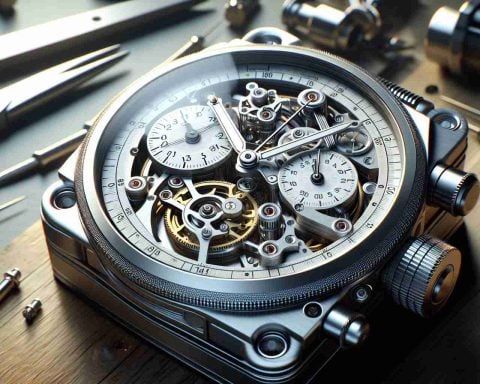In recent years, Iran has made significant strides in its domestic defense industry, particularly in the development of unmanned aerial vehicles (UAVs). The unveiling of the Shahed 238 drone marks yet another milestone in Iran’s aerospace capabilities. Although this is not breaking news, the introduction of the Shahed 238 remains relevant as it reflects ongoing advancements in military drone technology globally.
Iran has been producing drones for several decades, and with each iteration, their capabilities have become more sophisticated. The Shahed 238 is a noteworthy addition to Iran’s UAV arsenal due to its jet-powered engine, setting it apart from many of Iran’s earlier models which were primarily propeller-driven. This advancement allows the drone to reach higher speeds and altitudes, making it suitable for a variety of missions ranging from reconnaissance to potentially offensive operations.
Equipped with a suite of advanced features, the Shahed 238 includes enhanced navigation systems and improved avionics, which provide greater autonomy and precision during missions. The drone is reported to have a robust communication link, enabling it to integrate seamlessly into Iran’s broader defense network. This capability is crucial for coordinating operations in complex environments, where real-time data and communication are essential.
The development of the Shahed 238 is evidence of Iran’s commitment to bolstering its self-reliance in defense technologies amid international sanctions and geopolitical tensions. By producing more advanced drones domestically, Iran aims to reduce its dependency on foreign military suppliers and enhance its strategic capabilities.
While the announcement of the Shahed 238 may not be recent, revisiting such developments is important as they shed light on current trends in military technology and strategic balance in the Middle East. As countries continue to innovate and expand their UAV programs, understanding each nation’s capabilities helps in analyzing regional security dynamics. Iran’s focus on enhancing its drone technology illustrates a broader global trend where unmanned systems are becoming central to modern warfare strategies.
In conclusion, the Shahed 238 serves as a testament to Iran’s technological advancements in UAV development. Although the initial unveiling has passed, the implications of such innovations continue to be relevant in discussions about military technology and regional security. As countries, including Iran, push the envelope of drone capabilities, the role of UAVs in international security contexts will only become more pronounced.
Exploring Global UAV Trends and Tips for Understanding Drone Advancements
The development of military unmanned aerial vehicles (UAVs) like Iran’s Shahed 238 highlights the rapid advancements in drone technology worldwide. As technology continues to evolve, understanding the driving factors and implications of these advancements can offer insights into modern military strategies and future trends in the defense industry. Here are some interesting facts and tips related to UAV developments:
1. The Evolution of UAV Technology
Historically, drones were primarily used for surveillance and reconnaissance. However, recent years have seen a transition towards more versatile roles, including combat and logistics. An example of this evolution is the introduction of jet-powered drones like the Shahed 238, which are faster and more agile than propeller-driven models. This shift allows for broader operational capabilities and increased mission flexibility.
2. The Importance of Autonomy and AI
As drones become more sophisticated, the integration of artificial intelligence and autonomy becomes crucial. Modern UAVs are equipped with advanced avionics and navigation systems that enable autonomous operations, reducing the need for constant human control. AI can also enhance decision-making capabilities, allowing drones to respond dynamically to changing environments.
3. Global Investment in UAV Technology
Countries around the world are investing heavily in UAV technology, seeing it as a strategic asset. This investment is not solely for military purposes; drones are increasingly used in fields like agriculture, disaster management, and environmental monitoring. Governments and private sectors both recognize the potential of drones to transform various industries.
4. Strategic Implications of Drone Advances
The enhanced capabilities of newer drones contribute to shifting power dynamics in regions with geopolitical tensions. Understanding these capabilities can provide insights into the strategic objectives of different nations. For example, the development of sophisticated UAVs by countries like Iran can influence security policies and military strategies in the Middle East.
5. Staying Informed on UAV Developments
For those interested in the field of UAV technology and its implications, staying informed is key. Keep an eye on news and publications that cover advancements in drone capabilities and their applications. Engaging in discussions and forums can also enrich your understanding of this rapidly evolving field.
Recommended Resources
For more detailed insights into the world of defense technologies and UAV advancements, you might want to explore resources from trusted organizations and news outlets. Reliable websites provide comprehensive information on global trends, analysis, and reports.
Here are some links that might be of interest:
– Defense News for the latest developments in military technology.
– Jane’s Information Group for in-depth military analysis and reports.
– RAND Corporation for research in technology and defense strategies.
By keeping informed about the latest trends and understanding the implications of UAV advancements, you can gain a deeper appreciation for the strategic role these technologies play in today’s world. As countries continue to innovate, the role of UAVs will undoubtedly evolve, making it an exciting area to watch.






















